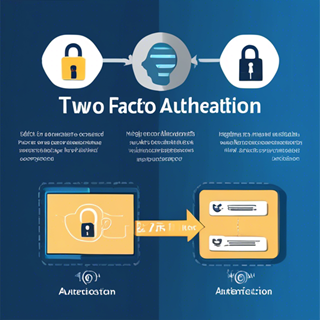What Is Two-Factor Authentication?
Two-Factor Authentication (2FA) is a security process that requires users to provide two different authentication factors to verify their identity. These factors typically fall into one of three categories:

- Something you know: This could be a password, PIN, or any other piece of knowledge that the user possesses.
- Something you have: This involves a physical device or token, such as a smartphone, smart card, or security key.
- Something you are: This refers to biometric data, such as fingerprints, retina scans, or facial recognition.
Now that we have an understanding of what Two-Factor Authentication (2FA) is and how it adds an extra layer of security by requiring users to provide two different authentication factors, let's look into its advantages and disadvantages. Examining the pros and cons of 2FA will give us a comprehensive view of its impact on security, user experience, and overall effectiveness in safeguarding digital identities.
- Enhanced Security: The primary advantage of 2FA is the increased security it provides. Even if a user's password is compromised, an additional factor is required for access, making unauthorized access more difficult.
- Mitigation of Credential Theft: Since 2FA requires a second form of authentication, the risk of unauthorized access due to stolen or leaked passwords is significantly reduced.
- Adaptability: 2FA can be implemented in various ways, using a combination of factors. This adaptability allows organizations to choose the methods that best suit their security needs and user preferences.
- Compliance: In certain industries and regulatory environments, the use of 2FA is mandated as part of compliance requirements to ensure data security.
- User Awareness: 2FA helps raise user awareness about the importance of security and encourages the adoption of good password practices.
- Usability Challenges: Some users may find 2FA inconvenient, especially if the additional factor involves carrying a physical token or undergoing a biometric scan.
- Implementation Costs: Implementing 2FA may involve additional costs for organizations, particularly if they opt for hardware tokens or other advanced authentication methods.
- Potential for Lockout: Users may be locked out of their accounts if they lose the second factor or if there are issues with the authentication system.
- Dependency on Communication Channels: Certain 2FA methods, such as one-time codes sent via SMS, rely on communication channels that may be susceptible to interception or other security risks.
- Phishing Risks: While 2FA is effective against many forms of attack, it may not prevent phishing attacks where an attacker tricks the user into providing both authentication factors.
Two-Factor Authentication is adopted for its pivotal role in fortifying digital security. By introducing an additional layer of authentication beyond passwords, 2FA significantly enhances protection against unauthorized access, mitigating risks associated with compromised passwords. Its widespread use is fueled by compliance requirements, with many industries mandating 2FA as a fundamental security best practice. Organizations, especially in sectors dealing with sensitive information, such as online banking and healthcare, leverage 2FA to safeguard confidential data and ensure user authentication assurance.
In summary, despite the challenges it may pose, the adoption of Two-Factor Authentication is driven by its effectiveness in enhancing security, mitigating risks, and instilling confidence in user authentication processes. As a widely embraced practice, 2FA plays a crucial role in safeguarding sensitive information and systems across diverse industries.


